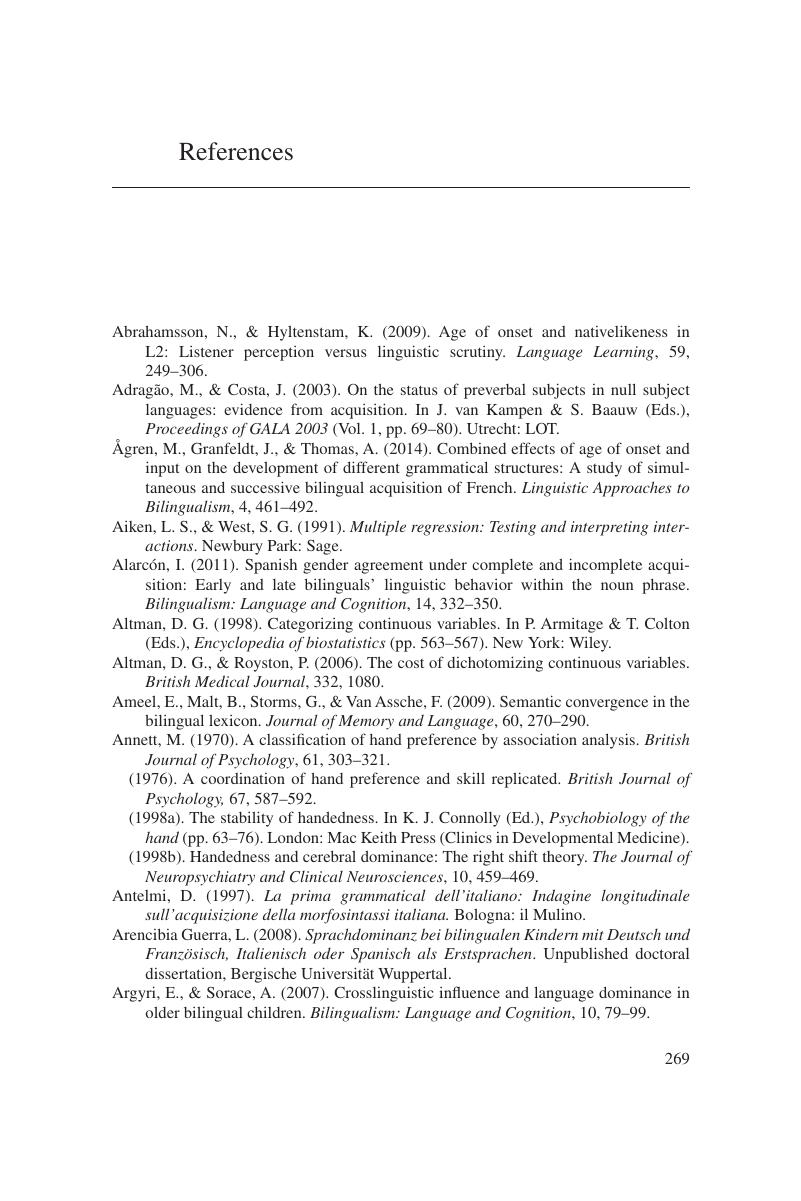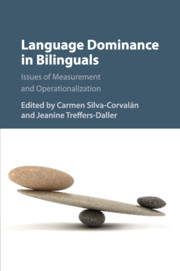Book contents
- Half title page
- Title page
- Copyright page
- Contents
- Figures
- Tables
- Editors and contributors
- 1 Digging into dominance: A closer look at language dominance in bilinguals
- 2 Dominance and proficiency in early and late bilingualism
- 3 Related but different: The two concepts of language dominance and language proficiency
- 4 The Complementarity Principle and its impact on processing, acquisition, and dominance
- 5 Dominance in bilingualism: Foundations of measurement, with insights from the study of handedness
- 6 Using lexical diversity measures to operationalize language dominance in bilinguals
- 7 Balance patterns in early bilingual acquisition: A longitudinal study of word comprehension and production
- 8 Amount of exposure as a proxy for dominance in bilingual language acquisition
- 9 The role of the childhood environment for language dominance: A study of adult simultaneous bilingual speakers of German and French
- 10 Assessing the relationship between input and strength of language development: A study on Italian–English bilingual children
- 11 Measuring language dominance in bilingual children: Implications for crosslinguistic influence
- 12 Language dominance: The construct, its measurement, and operationalization
- 13 Conclusion
- Bibliography
- Index
- References
Bibliography
Published online by Cambridge University Press: 18 December 2015
- Half title page
- Title page
- Copyright page
- Contents
- Figures
- Tables
- Editors and contributors
- 1 Digging into dominance: A closer look at language dominance in bilinguals
- 2 Dominance and proficiency in early and late bilingualism
- 3 Related but different: The two concepts of language dominance and language proficiency
- 4 The Complementarity Principle and its impact on processing, acquisition, and dominance
- 5 Dominance in bilingualism: Foundations of measurement, with insights from the study of handedness
- 6 Using lexical diversity measures to operationalize language dominance in bilinguals
- 7 Balance patterns in early bilingual acquisition: A longitudinal study of word comprehension and production
- 8 Amount of exposure as a proxy for dominance in bilingual language acquisition
- 9 The role of the childhood environment for language dominance: A study of adult simultaneous bilingual speakers of German and French
- 10 Assessing the relationship between input and strength of language development: A study on Italian–English bilingual children
- 11 Measuring language dominance in bilingual children: Implications for crosslinguistic influence
- 12 Language dominance: The construct, its measurement, and operationalization
- 13 Conclusion
- Bibliography
- Index
- References
Summary

- Type
- Chapter
- Information
- Language Dominance in BilingualsIssues of Measurement and Operationalization, pp. 269 - 296Publisher: Cambridge University PressPrint publication year: 2015



